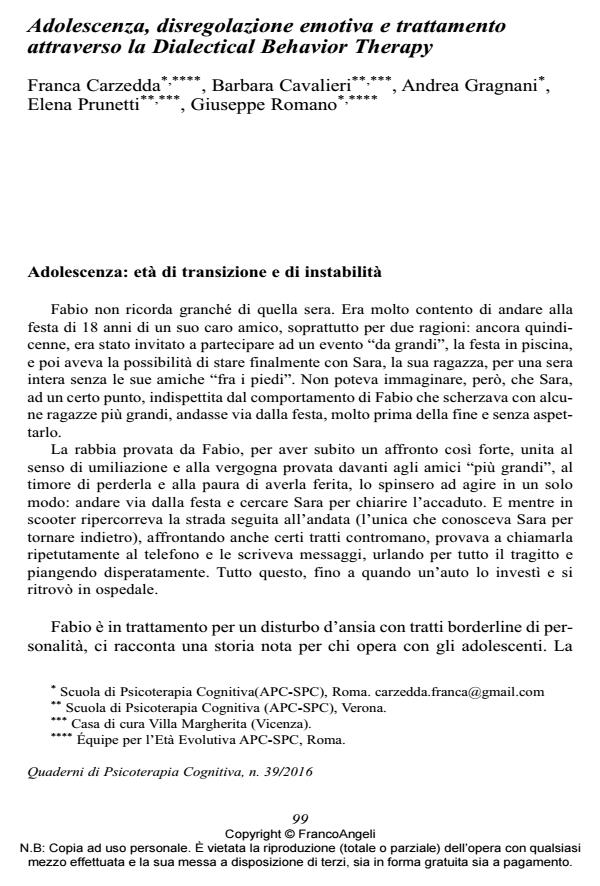Adolescence, emotional dysregulation and treatment through Dialectical Behavior Therapy
Journal title QUADERNI DI PSICOTERAPIA COGNITIVA
Author/s Franca Carzedda, Barbara Cavalieri, Andrea Gragnani, Elena Prunetti, Giuseppe Romano
Publishing Year 2016 Issue 2016/39
Language Italian Pages 22 P. 99-120 File size 157 KB
DOI 10.3280/QPC2016-039007
DOI is like a bar code for intellectual property: to have more infomation
click here
Below, you can see the article first page
If you want to buy this article in PDF format, you can do it, following the instructions to buy download credits

FrancoAngeli is member of Publishers International Linking Association, Inc (PILA), a not-for-profit association which run the CrossRef service enabling links to and from online scholarly content.
Individuals undergo numerous changes during adolescence. These changes, along with certain characteristics such as the tendency to experiment (with risky behavior), the pursuit of strong feelings and the need for independence, make psychotherapeutic interventions at this age particularly complex and difficult. The expert who specializes in adolescents is aware that when it comes to health risks and adaptation, these peculiarities put the individual’s capacity for autoregulation to the test. Therefore, interventions at this age should focus on emotion management and behavioral control, regardless of the problems that the patient reports. In this paper, we will describe emotional and behavioral regulation and dysregulation. We will also give an account of a Dialectical Behavior Therapy intervention that has been adapted for adolescents in recent years.
Keywords: Adolescence, emotional dysregulation, Dialectical Behavior Therapy
Franca Carzedda, Barbara Cavalieri, Andrea Gragnani, Elena Prunetti, Giuseppe Romano, Adolescenza, disregolazione emotiva e trattamento attraverso la Dialectical Behavior Therapy in "QUADERNI DI PSICOTERAPIA COGNITIVA" 39/2016, pp 99-120, DOI: 10.3280/QPC2016-039007